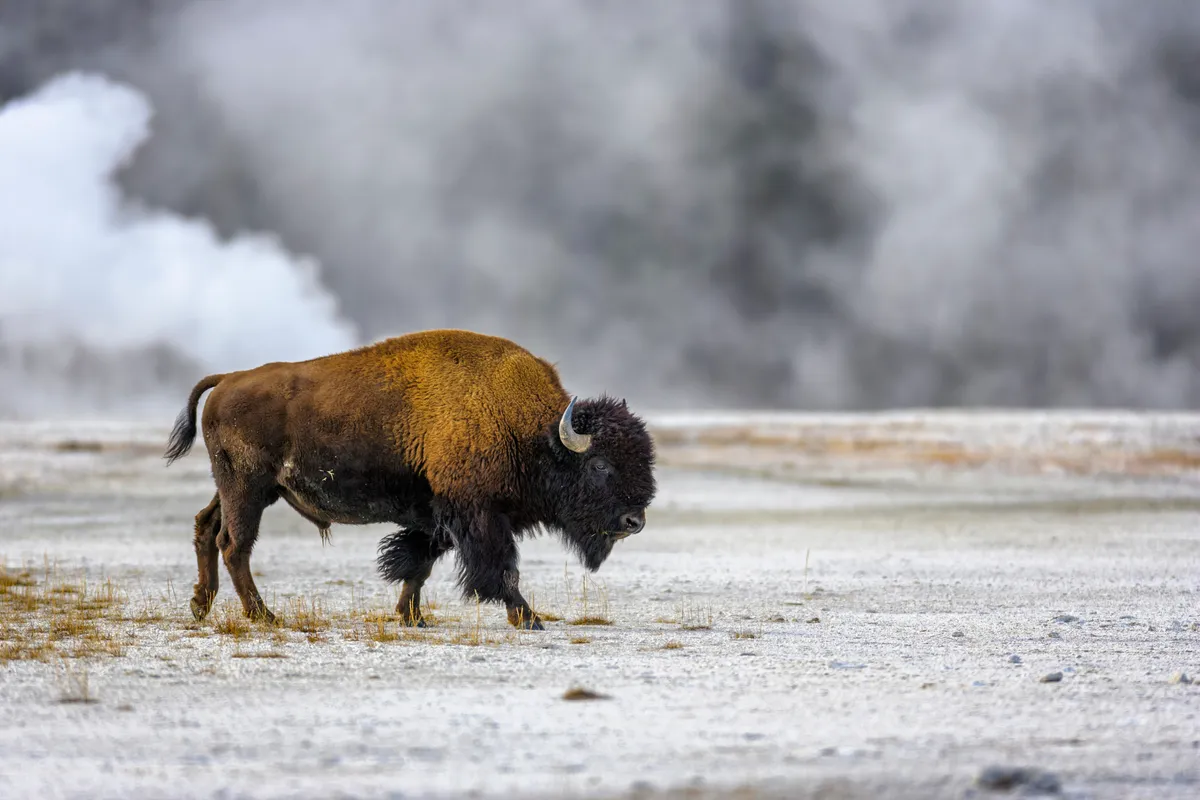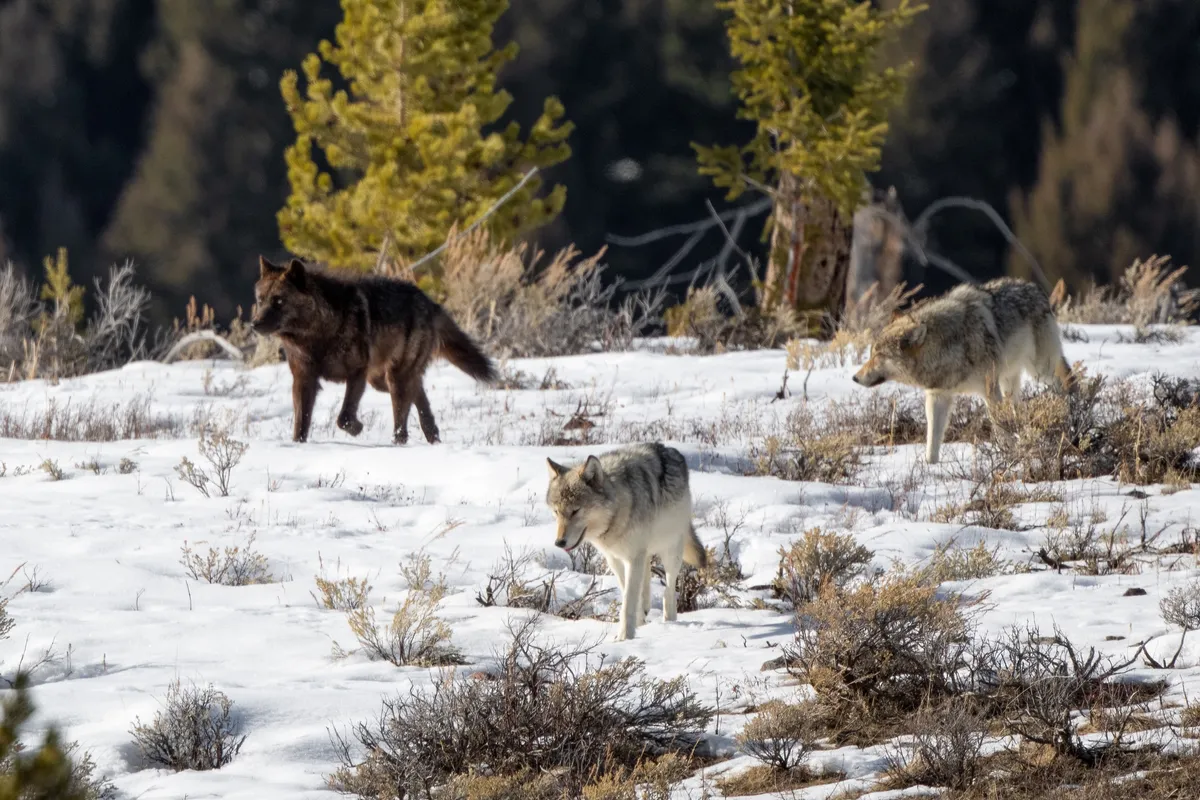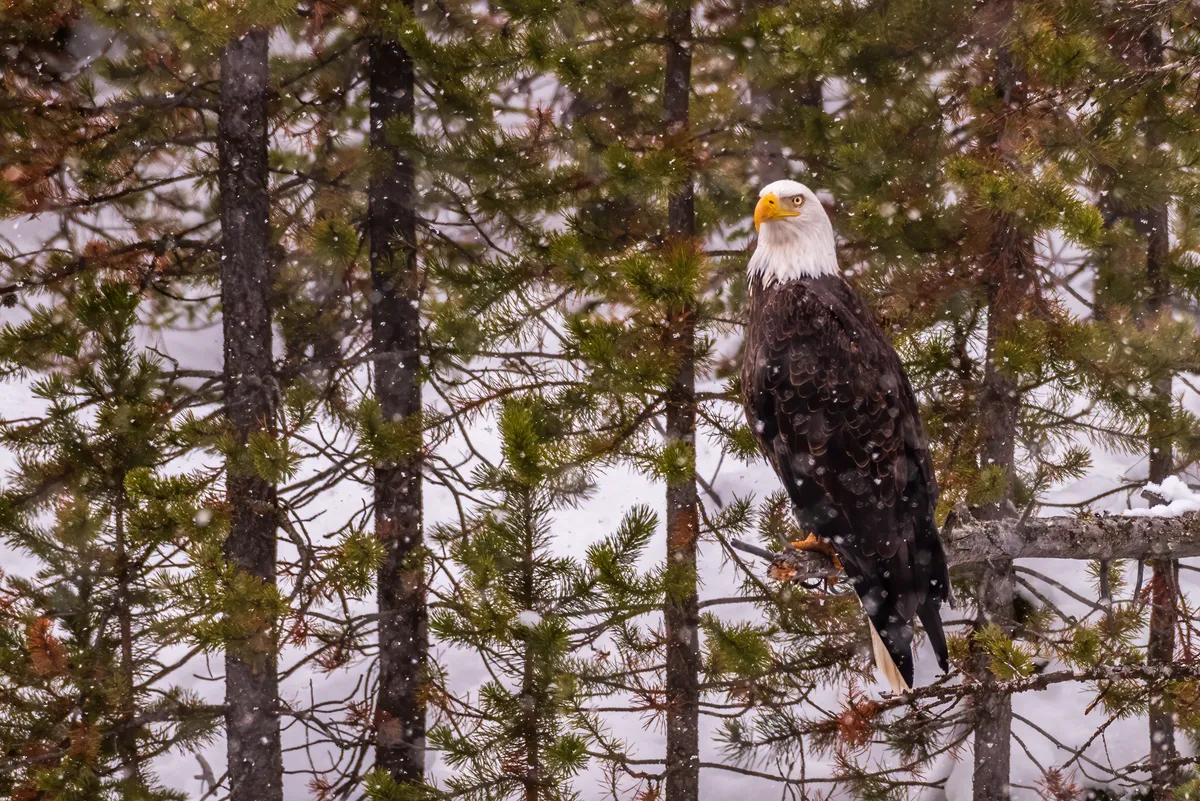Signed into law on 1 March 1872 by President Ulysses S. Grant, Yellowstone was first ever national park in the US and in the world. In 1978, Yellowstone National Park was named a UNESCO World Heritage Site.
It is renowned for its extensive lodgepole pine forests and geothermal features. The majority of the park lies within Wyoming, but it also extends into Montana and Idaho.
Yellowstone Lake is centred over the Yellowstone Caldera, which is the largest volcanic system in North America and is currently a dormant volcano. It last erupted around 640,000 years ago and is deemed to be a supervolcano. If the Yellowstone volcano exploded, it is thought that it would cause a volcanic winter, with the US blanketed with ash and the expelled sulphur dioxide causing the climate to cool for a decade. The volcano is also the cause of the park's geysers, other hydrothermal features and the thousands of earthquakes that occur at Yellowstone each year (almost all are undetectable to people).
There are nine visitor centre and museums, as well as numerous historical structures and buildings, such as the Old Faithful Inn. There are over 2,000 campsites, and more than 1,800km of hiking trails.
What wildlife can be seen in Yellow Stone National Park?
Yellowstone National Park is home to hundreds of animal species, including 60 mammals, 18 fish, seven reptiles and over 300 birds. There are also more than 1,700 species of native trees and vascular plants, plus an additional 170 species. Non-native plants can cause competition with native plants, and are normally found in areas with high human visitation.
The Yellowstone sand verbena (Abronia ammophila), also known as Wyoming sand verbena, is endemic to the park – it only grows in four populations in the sandy soils around Yellowstone Lake. Very little is known about the plant's life history.
American bison (Bison bison)

Yellowstone is also the only place in the USA where American bison have lived continuously since prehistoric times. Once numbering less than 50 animals in 1902, it is now the largest public herd in the USA. The areas around Mammoth Hot Springs and the Old Faithful geyser – both worth visiting in their own right – are said to be good all year round for these one-tonne beasts.
Their European cousin is being reintroduced in the UK in spring 2022.
The scientific name of the American bison, Bison bison, is an example of a tautonym, where the genus and specific name are the same.
Grey wolf (Canis lupus)

In 1995, Yellowstone National Park played host to one of the most famous rewilding experiments on Earth – the reintroduction of grey wolves. These mammals had been gradually declining due to increased agriculture and human-wildlife conflict, and in 1925, the last grey wolves in Yellowstone were killed. As a result, elk (also known as the wapiti) numbers exploded and the park suffered from overgrazing. In addition, the loss of wolves led to a rise in coyote populations, which then reduced the pronghorn antelope population.
These predators have been keeping herbivores such as elk (the North American relative of our red deer) on their toes, reducing browsing pressure on trees such as willow. This in turn has led to a resurgence in beavers. The Hayden and Lamar Valleys are good places for wolf-spotting, with winter offering the best chance of a sighting. The packs are named after the areas of the park where they are found, for example the Druid Peak Pack and the Lamar Canyon Pack.
While wolves are protected within the park, there are different rules between the states outside.
Bald eagle (Haliaeetus leucocephalus)

The bald eagle is falsely named, as the ‘bald’ part actually derives from ‘white headed’, an older meaning of the word. It is the national bird of the USA, appearing on its seal, but almost went extinct in the country. Fortunately populations have recovered, and it was removed from the US government's list of endangered species in 1995.
It forms a species pair with the white-tailed eagle (Haliaeetus albicilla), filling the same ecological niche.
Bald eagles are the park's second- most common raptor, with six known active nests around Yellowstone Lake. In severe winters, they may descend to lower elevations, such as Paradise Valley, north of the park.
Main image: Wildlife of Yellowstone National Park. © Bex Glover





